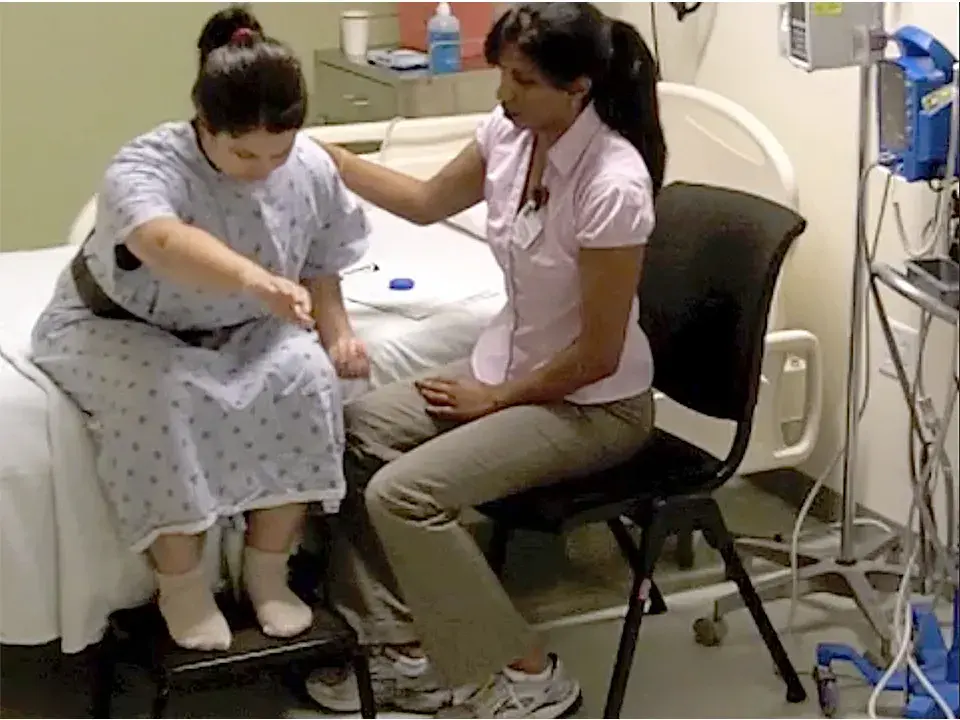Why This SMU Professor has Researchers Flocking to Her

Professor Sharon Gorman is the creator of the Function in Sitting Test (FIST), one of the world’s foremost exams in measuring a person’s ability to balance while sitting. The test is taught in SMU’s physical therapy program and used by physical therapists to assess people with brain injuries, particularly those who have experienced a stroke.
Before Gorman’s test, there was nothing but a therapist’s intuition to determine a patient’s condition. In fact, researchers hadn’t thought much about balance while sitting. Gorman remembers attending an international physical therapists conference in 1999, intent on learning how to help stroke patients she saw on a daily basis in the ICU at the Regional Medical Center of San Jose. She arrived early for a talk on balance, and while the experts had a lot to say about measuring progress in people re-learning to balance while walking, they had nothing to say about the people she worked with.
She mentioned this to a friend, who told her: “Sounds like you’re going to have to be the one to do the research!”
That’s exactly what Gorman did. We spoke to Gorman about the FIST test and why physical therapists and researchers from around the world reach out to her.
What is the FIST?
The Function in Sitting Test is a clinical, performance-based sitting balance test comprised of 14 items. These are everyday things that people might do while sitting, like sitting still, turning their head from side to side, or picking up their foot. Each of these items gets a score. You can see whether a person is improving in sitting balance based on whether their scores increase or decrease.
That seems fairly straightforward. There wasn’t a similar test in the past?
There was no systematic methodology and no levels of evaluation like the 14 items of the FIST. At the time I went to the conference, it was an earthshattering, new idea for physical therapists to be using metrics. In the past, people simply rated sitting balance on the subjective scale of “good,” “fair,” “bad,” and “poor.”
When research started to be done on more precise balance tests, most researchers gravitated toward balance in walking because there were more people to study.
It’s exciting how weird moments—like that friend telling me at the conference that I’d have to be the person to do the research—can really change your life.
Why research sitting balance?
I was thinking about going back to school to get a doctoral degree in order to become a professor and I knew that I’d have to do a research project and dissertation. When I realized at the conference that nobody was really studying balance in sitting, it seemed like the perfect fit.
This is not the path I necessarily saw myself going down when I graduated from physical therapy school 30 years ago. But I absolutely love what I do. It’s exciting how weird moments—like that friend telling me at the conference that I’d have to be the person to do the research—can really change your life.
Since you published it 11 years ago, the test has been translated into Spanish, French, and Turkish, and people all over the world inquire about it regularly. What’s next?
I initially validated the test with people who have had strokes because I could find enough of those people to get the data I needed. Now we’re looking at how to adapt the test for people with spinal cord injuries, which are complicated injuries with additional variables that aren’t accounted for in the current FIST. A few other groups have started this work and we’re building on it.
I’m also collaborating with a group of researchers at Spaulding Rehabilitation Hospital in Boston to study whether the test can be used to make predictions about whether people with brain injuries will be able to walk again.


